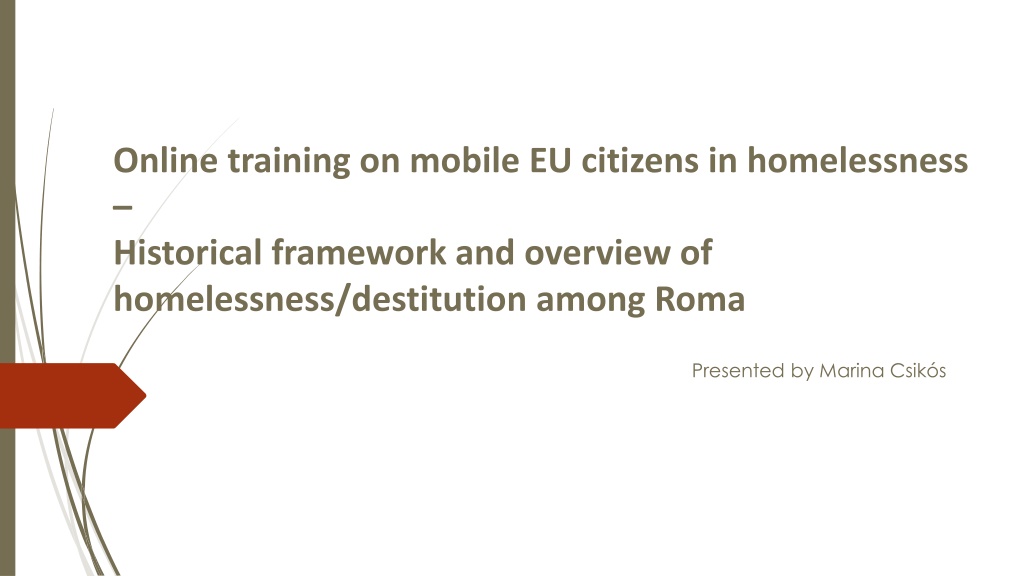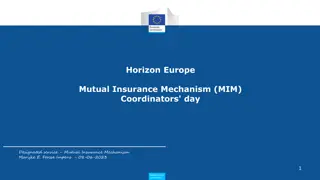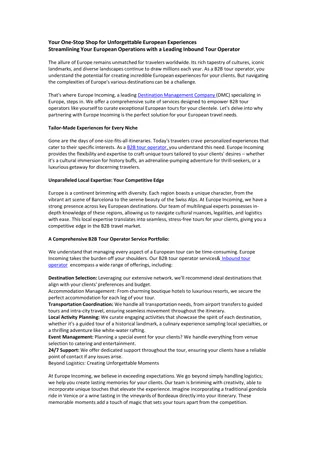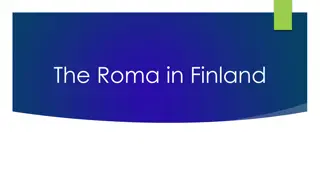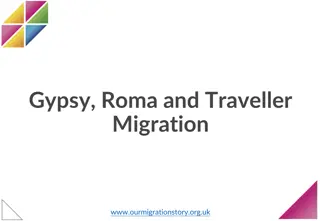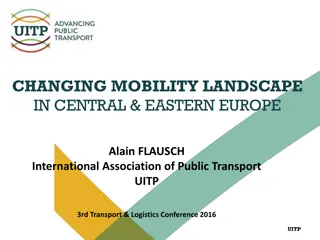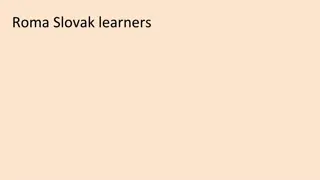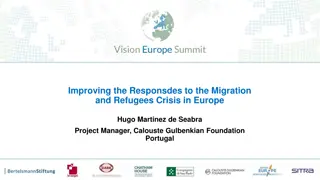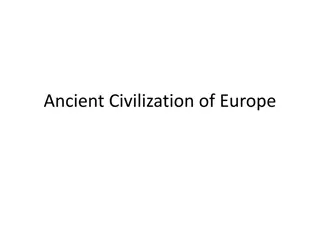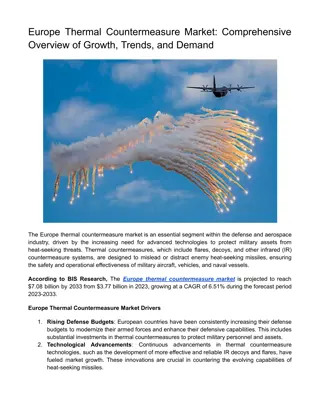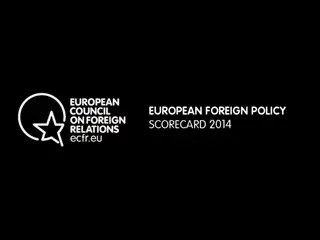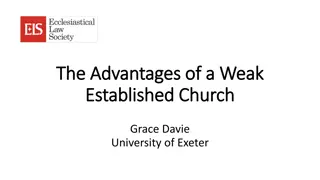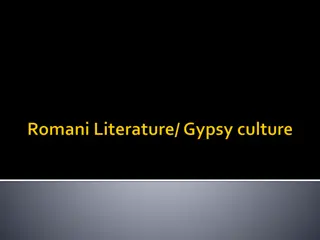Challenges Faced by Roma in Europe: A Comprehensive Overview
Delve into the historical framework and present-day challenges of Roma communities in Europe, focusing on issues like homelessness, education disparities, and employment struggles. Learn about the marginalization Roma have endured over the centuries, including forced assimilation, internment, and economic hardships. Despite efforts to improve conditions, Roma still face significant hurdles in accessing education and employment opportunities.
Uploaded on Jul 01, 2024 | 1 Views
Download Presentation

Please find below an Image/Link to download the presentation.
The content on the website is provided AS IS for your information and personal use only. It may not be sold, licensed, or shared on other websites without obtaining consent from the author. Download presentation by click this link. If you encounter any issues during the download, it is possible that the publisher has removed the file from their server.
E N D
Presentation Transcript
Online training on mobile EU citizens in homelessness Historical framework and overview of homelessness/destitution among Roma Presented by Marina Csik s
Who are the Roma? The term Roma refers to Roma, Sinti, Kale and related groups in Europe, including Travellers and the Eastern groups (Dom and Lom), and covers the wide diversity of the groups concerned, including persons who identify themselves as Gypsies. - CoE Glossary of Terms relating to Roma 2012 Roma/Sinti/Kale as ethnic group vs. others who sometimes share same lifestyle but do not have same ethnic origin or language e.g. Yenish and Irish Travellers Europe s largest minority 10-12 million Roma estimated in Europe (6 million est. within EU) - in many countries collecting data on ethnic oirigin is not allowed
Marginalization of the Roma over the centuries Slavery of Romani people abolished mid-19thcentury (Romania); deprivation and possession of land 18thcentury internment in Spain, forced assimilation laws in Austro-Hungarian empire Second wave of migration second half of 19thcentury Roma groups from Central and Southeast Europe moved to all regions of Europe and overseas Roma Holocaust- Porajmos (Roma Genocide in Romanes) Situation of Roma under communism Forced sterilizations- Norway, Slovakia, Hungary, etc. Third wave of migration collapse of Soviet Union & former Yugoslavia east-west migration of Roma as victims of war, poverty driven migration recent waves branded as economic refugees
The Situation of the Roma today - Education Roma children fall behind their non-Roma peers on all education indicators. 53% in ECEC 18% attend educational level lower than that corresponding to their age 50% completed primary, 20% completed secondary Segregation in schooling (61%) Only about half (53 %) of Roma children between the age of four and the starting age of compulsory primary education participate in early childhood education. On average, 18 % of Roma between 6 and 24 years of age attend an educational level lower than that corresponding to their age. The proportion of Roma early school- leavers are disproportionately high compared with the general population. School segregation remains a problem in Hungary
Employment On average, 43 % of Roma aged 20 to 64 in the countries surveyed were in paid work in 2021 Only 28 % of Roma women aged 20 to 64 are in employment in comparison with 58 % of Roma men. This gap is similar to that observed in 2016. The gender employment gap reached on average 31 percentage points in 2021 (Figure 18). This is a negative trend compared with 2016, as the gender gap was, on average, 27 percentage points in 2016. On average, even more Roma aged 16 24 were NEET in 2021 than in 2016 Every third Roma older than 16 experienced discrimination due to being Roma when looking for work in the last 12 months
Harassment and Hate Crimes Against Roma Almost half of Roma and Traveller respondents (44 %) say that they experienced hate-motivated harassment in the 12 months before the survey. About 7 % of respondents say that they were physically attacked because of being Roma or Travellers in the 12 months before the survey. Not reporting hate-motivated incidents is common: 93 % of hate-motivated harassment and 88 % of physical attacks that happened in the past five years were not reported anywhere. More than half (53 %) of respondents who did not report the most recent hate-motivated physical attack believed that nothing would happen or change if they reported it. Meanwhile, 16 % did not know where to go or whom to contact about it. About one in 10 Roma and Traveller respondents (11 %) were stopped by the police in the 12 months before the survey with ethnic profiling; 8 % of respondents were stopped by police without ethnic profiling. Eight out of 10 respondents (81 %) were not stopped by police in the 12 months before the survey. Moreover, about 4 % of the survey respondents indicate that they were physically assaulted by a police officer because of their Roma or Traveller background in the past five years.
Intersectionality Intersectionality as a concept has existed even before Kimberl Crenshaw coined the term in 1989 Focused on the oppression of black women within the society: both as being black and women Developed to a widely used concept and methodology to think about all kinds of oppressions and their relationships, consequences and manifestations
Why intersectionality is relevant to Roma women and LGBTI? Heterosexual Roma women are target of anti-Roma racism and patriarchal/sexist oppression due to their ethnicity and gender Roma LGBTI people are target of anti-Roma racism, homophobia and (in case of Roma lesbians, transwomen, feminine man, etc.) patriarchal/sexist oppression There is lack of acknowledgment of the multiple discrimination these groups face Using intersectionality helps us to undertstand the complex experiences of Roma women and LGBTI people when it comes to discrimination and also to find solutions to the issues they face
Intersectional oppression in practice Education Roma women Roma girls attending primary school is better than Roma boys, but still below than the general population Unacceptably high number of early school leaving 66% for Roma men - 71% for Roma women Between the age of 16 - 24 years 72% of Roma women are neither working nor attending education or training Questions: What happens in the primary school why early school-leaving become higher among Roma girls? What are the consequences of early school leaving? Second European Union Minorities and Discrimination Survey Roma women in nine EU Member States (2019)
Roma women and Employment Only 16 percent of Roma women were employed in 2019 in the EU Early school dropout has a great influence on Roma women s opportunites at the labour market Lack of education will increase the risk of unemployment or quality working conditions Both structural and everyday racism are common obstacles for Roma women to find jobs Facing racial and gender related discrmination at workplaces Gender and racial pay gap Second European Union Minorities and Discrimination Survey Roma women in nine EU Member States (2019)
Other striking issues Low and distorted representation of Roma women in the media, history, art, etc. Discrimination within the healthcare system: forced sterilizations Excluding the participation and needs of Roma women from the mainstream feminist movements COVID-19 pandemic has just worsened the situation!
Roma LGBTI people Being minority within a minority exclusion, violence and mistreatment There is no institutional data (EC,FRA, CoE,etc.) data avaliable specifically on Roma LGBTI FRA EU-LGBTI II survey (2020) has showed continuous harrasment toward LGBTI: 58% have faced harrasment, 14% have reported hate-motived crimes to the police, Roma LGBTI face harrasment on multiple grounds ARA ART The Roma LGBTIQ minority and its status in selected EU countries (2021) provides some insights Roma LGBTI people are more vulnerable to becoming homeless and human trafficking
Resistance of Roma women and LGBTI The emergence of Roma women and LGBTI scholars, activists, artists changing and challenging existing racist/sexist narratives Growing Roma women and LGBTI civil society Tackling intersectional discrimination from the grassroot
Some outstanding Roma women and LGBTI persons you should know about Ceija Stojka writer, artist, singer, activist and Holocaust survivor Katarina Taikon leader of Romani civil rights movement in Sweden Nicoleta Bitu - human and women s right activist Vera Kurtic radical feminist activist, author of D uvljarke- lesbian existence of Roma women, a study focused on non-heterosexual Romani women Dezso Mate scholar and reseracher, one of the firsts who has raised awareness about Roma LGBTI people in front of a larger public The list is fortunately is just growing!
E-Romnja The change Roma women in Romania has been waiting for Fighting for dignity, respect and integrity of Roma women Working with intersectional approach: there is no democracy without the participation of women Working on developing grassroot initiatives that tackle different issues: empowerment of Roma girls and women, sexual and reproductive health, fighting agaisnt patriarchal oppression Doing advocacy for local budget redistribution Making sure that Roma women are appropriately represented in media, public space and political agendas
ARA ART Young, Roma and LGBTI First CSO working specifically on issues Roma LGBTIQ people face Their aims are: To improve the information available to crucial stakeholders about the position of LGBT+ people of Romani origin in selected countries To raise awareness and information about LGBT+ people of Romani origin To strengthen EU policies which affect Roma LGBTI +
Thank you for your attention! Email: csikosmarina1993@gmail.com LinkedIn: Marina Csikos
